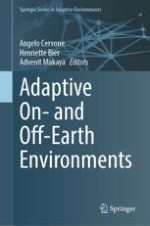2024 | OriginalPaper | Buchkapitel
2. Advancing Design-To-Robotic-Production and -Assembly of Underground Habitats on Mars
verfasst von : H. Bier, A. Hidding, F. Veer, L. Peternel, R. Schnmehl, A. Cervone, M. Verma
Erschienen in: Adaptive On- and Off-Earth Environments
Aktivieren Sie unsere intelligente Suche, um passende Fachinhalte oder Patente zu finden.
Wählen Sie Textabschnitte aus um mit Künstlicher Intelligenz passenden Patente zu finden. powered by
Markieren Sie Textabschnitte, um KI-gestützt weitere passende Inhalte zu finden. powered by
